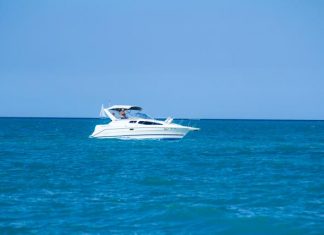BMW sales executives in Munich must kneel beside their bed every night and give thanks to the guy in product planning who conceived the X5.
The pitch might have gone something like this: “We’ll just take our 5 Series sedan, build a big boxy body on it, add all-wheel-drive, produce it at an untried plant in South Carolina and throw it out there to see what happens.”
What happened is that this mere niche vehicle when it was launched in 2000 has become BMW’s global second-best seller behind the more affordable 3 Series.
Even in Australia, BMW has sold almost 40,000 of the big beasts, making the X5 the perennial No. 1 in the large luxury SUV market. The third generation has arrived, bringing a new look and a host of improvements including a larger body and a broader range that includes a more affordable four-cylinder, rear-wheel-drive variant for the first time.
The cheapest X5 is now the rear-drive 2.0-litre diesel sDrive25d at $82,900 (plus on-road costs), which lines up against arch rival Mercedes-Benz’s similarly equipped M-Class SUV (and which, incidentally, is also built in America’s deep south).
Six other X5 models are available, covering six-cylinder diesel and petrol engines and petrol V8. The range tops out with the triple-turbo six-cylinder diesel, the sports-tuned M50d, at $147,900.
Our test car was the classic V8 petrol xDrive50i, which, despite its moniker, is powered not by a five-litre engine but a 4.4-litre V8, this time boosted by twin turbos and breathing through a variable valve timing system. BMW’s excellent eight-speed automatic transmission is standard equipment.
Priced at $133,900 ($145,467 driveaway), this X5 rumbles along with a hairy-chested 330 kilowatts of power (up 30kW on the previous model) and 650 Newton metres of torque (up 50Nm) under the right foot.
When the X5 first appeared, the petrol V8 model was the most popular variant, but as diesel has taken hold here, mainly due to advances in performance, cleanliness and quietness, the 3.0-litre diesel model has come to dominate sales.
Now, the V8 X5 is mainly sought by those wanting a big dollop of performance with their SUV spaciousness, class-leading handling and commanding ride height.
The good news is that the new V8 X5 is not only more powerful and faster than before – it covers the sprint from zero to 100km/h in a sharp five seconds – but also more efficient. BMW says thirst has been slaked by about 16 per cent, down to 10.5 litres per 100 kilometres, thanks to fuel-efficiency methods such as reducing weight (an aluminium bonnet replaces steel, for example), idle stop at the traffic lights and regenerative braking that tops up the battery as the car glides to a stop rather than when driving around. We managed about 14 litres per 100 kilometres in a week of city driving.
Like most SUVs today, the X5’s natural habitat is the leafy eastern suburbs, although if you want to venture on to a muddy bush track, it will give a reasonable impersonation of a Toyota Prado. But its strong suit is its all-round driving ability, especially its peerless road manners (for a car of its size). That’s why BMW calls it a “sports activity vehicle”.
The X5’s interior is pure BMW, with high-end leather, white-on-black circular dials (supplemented by a digital head-up display projected on the windscreen) and a wide free-standing LCD screen dominating the centre of the dash and operated by the German company’s iDrive knob on the console.
It is all very high-tech but easy to use compared with many others. Unfortunately, however, the console layout is designed for left-hand drive, so the buttons are a little awkward to reach behind the transmission shift lever.
The X5’s seats are perfect for hours in the saddle, boasting myriad electric-operated adjustments including the important under-thigh extension, as well as heating. As the car’s size would suggest, spaciousness is not an issue, but it is only a five-seater – there is no third row of seats in the back.
We love the new surround-view camera system for reversing, showing a 360° view of the car’s surroundings, supplemented by parking sensors. And if you can’t be bothered parking the car, the automated “parking assistant” will do it for you.
Other features are automatic emergency braking, active cruise control with “stop and go” when following another vehicle, a Harman/Kardon surround-sound system, internet functionality and DAB+ digital radio and voice control.
Our X5’s cabin was cloaked in beige leather and carpets, which also extended to the carpet lining of the rear cargo area. Better stock up on carpet cleaner or choose another colour.
This cargo area has a pull-out cover and lots of tie-down points, and is accessed via a two-piece hatch-and-tailgate, with the top hatch now swinging open electrically with the touch of a button on the keyless fob. Most loads could be lifted over the smaller bottom tailgate with relative ease, but that can be opened down with a pull of a simple lever.
A space-save spare wheel lurks under the rear floor, which is high, reducing luggage space to good but not great. A hidden space under the floor helps, as do split-folding rear seats.
Overall, the latest X5 has all the strengths of the previous generations, but gains all the latest gizmos for safety and convenience and much more standard equipment. All those 40,000 current X5 drivers will love it if they trade up.
Test drive the new X5 at Brighton BMW, 363 Nepean Highway, Brighton. 9524 4000. www.brightonbmw.com.au
What is it? All-wheel-drive luxury SUV
What’s in it? 4.4-litre turbocharged V8 engine
Power 330kW. 0-100km/h: 5.0 sec
Is it thirsty? 10.5 litres per 100km (petrol)
Thumbs up V8 performance, improved fuel-efficiency, new safety and convenience features, spacious cabin, electric rear hatch, 360° parking camera system
Thumbs Down Still thirsty compared with diesel variants, shallow cargo area, dirt-attracting beige interior of test vehicle








